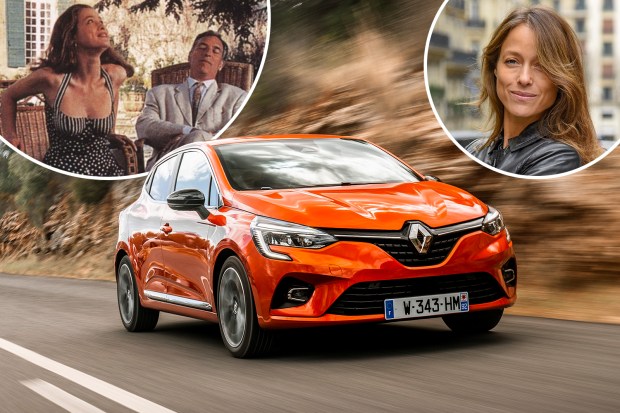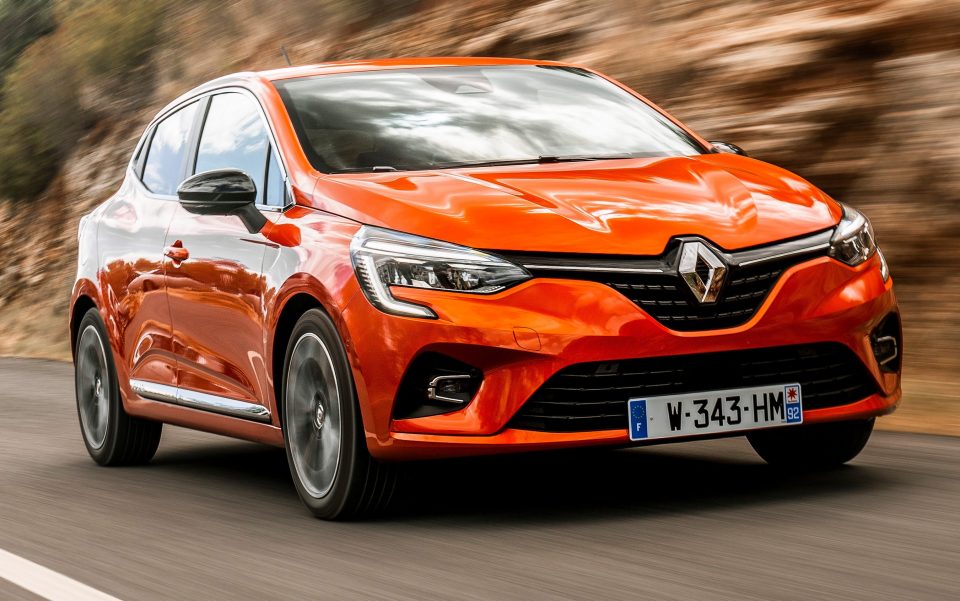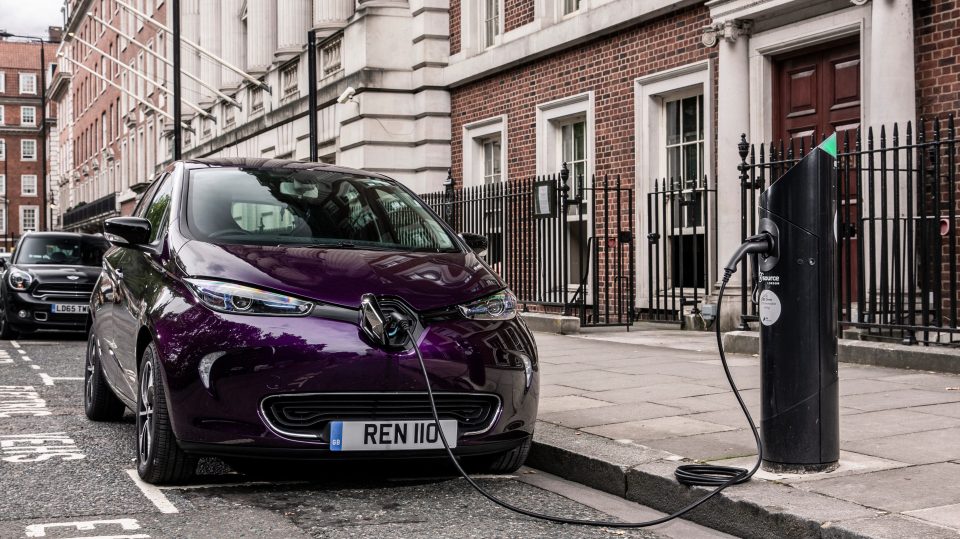2020 Renault Clio 5 has matured like a fine wine — as has Nicole

TO anyone over 30, the Renault Clio is synonymous with one thing.
You know what I’m going to say next. Nicole.
The good news is she’s matured like a fine wine in a French chateau. As has the car.
But for reasons I can’t get my head around, Renault has overlooked the golden opportunity to remind us how iconic the Clio once was — by bringing back Nicole.
I’d have her fronting TV ads, partly because Clio is 30 soon but mostly because it would wee all over Vauxhall and Peugeot.
Their marketing bods need to promote the upcoming Corsa and 208 and nothing would get people talking like Nicole.
Can you remember a classic Corsa ad that’s worth revisiting? Me neither. The same goes for the 208.
I’ve got actress Estelle Skornik’s number, if you want it Renault?
Now let’s discuss the fifth-gen Clio. It is, in a word, magnifique.
I loved my Mk1 Clio in the Nineties and I instantly warmed to this new one. I’ll quickly gloss over all the flabby Clios in between.
First off, interior. I can’t think of a plusher cabin in any new car costing less than £17,000.
The soft-touch door, knee and dashboard panels put the Audi A1 to shame. Then there’s the low driving position — the lowest in class — which pleases me but won’t suit everyone.
Then there’s the digital instrument cluster and horizontal dash crowned by that 9.3in upended iPad.
The slick TomTom satnav with Google search warns of speed cameras and flags up fuel prices — red for rip-off, and green for a little less rip-off.
There are “piano keys” for the main controls and nice, big air con dials.
The cruise control now makes sense too, with all the buttons in one place on the steering wheel.
Bafflingly, the old Clio had cruise control buttons on both sides of the steering wheel AND an on/off switch down by the handbrake. I kid you not. Renault has worked hard to find “extra millimetres” of space everywhere — for the driver’s knees, for the passengers in the back, for the glovebox, for the boot floor, and so on.
The boot is now the biggest in class at 391 litres and has a squarer opening. The standard LED headlights illuminate 70 metres further down the road.
Up front, you’ve got a choice of two 1-litre three pot petrols — non-turbo and turbo — plus a cheeky 1.3-litre four-cylinder turbo petrol, and a clean 1.5-litre diesel with SCR tech to trap NOx.
The 1.3 producing 130hp is my pick — in RS Line trim (the blue car).
That’s mated to a seven-speed auto with flappy paddles and is shared with the Merc A-Class.
Or better still, wait for the uprated 180hp RSi, as teased by the Clio Cup car (the yellow one) at the French Grand Prix on Sunday.
QUALITY INTERIOR IS A REVOLUTION
The EU fun police have put paid to a full-blown Clio RS, sadly.
This time next year there’ll be a Clio hybrid which combines a 1.6-litre petrol with two electric motors and a self-charging 1.2kWh battery.
It sets off in electric and will do low-speed town driving in electric most of the time.
There won’t be an all-electric Clio, though. Renault already has Zoe.
Final observation. From the outside Clio looks very much like the outgoing Clio and the one before that.
Don’t be fooled. This is new from the ground up and the quality interior is a revolution.
In any other world, this would be the best car of its size and price but Fiesta still edges it with its sparkling chassis.
I’ll report back on the 208 when I drive it soon.
Good work, Renault. Now get on the blower to Nicole.
Bombproof Volvo
QUESTION: What car is safer than a Volvo?
Answer: An armoured Volvo, silly.
This XC90 can shrug off bullets, blasts and gas attacks – yet looks exactly like your neighbour’s motor. Which makes perfect sense. Rule 1 to avoid ambush: Don’t get spotted in the first place.
But if things do get sticky, at least you’ll see where your money went. The occupants are protected by 10mm high-strength steel armour, 50mm glass and a special oxygen supply system. There’s also an escape hatch. When Volvo pledged that no one would be killed in one of its cars from 2020, it meant it. It’s a tank with carpets. Yours for £450,000.
Ford ...Dodo
SOMEONE has to say it, so I’m just gonna throw it right out there.
The new Ford Puma . . . Dear God, no.
I mean, I get it. It’s a cleverly thought out high-riding crossover with seat covers you can stick in the washing machine and a plug hole in the boot.
All of which will make a lot of sense to a lot of people.
And it’s a hybrid, so you’ll get 1.5-litre performance with 1-litre economy. And it’s loaded with cameras. And adaptive cruise control. And massaging seats. And Bang & Olufsen sound. And Apple CarPlay. And wireless phone charging. And an 8in touchscreen. And a fully digital driver’s display nicked off the GT supercar.
Actually, I’m starting to convince myself now.
The deep “Megabox” boot can swallow two golf bags standing upright.
That’s impressive.
But DO NOT call it Puma.
I’m about to buy a Nineties original that’s low and cheap and individual and cool and a giggle to drive.
This looks tall and expensive and flabby and identikit crossover.
Key facts
FORD PUMA
- Price: £22,000 (est)
- Engine: 1-litre petrol hybrid
- Power: 155hp
- Economy: 50mpg
- CO2: 127g/km
- Out: January
What would Steve McQueen think?
Call it Orion or Scorpio or something after an old Ford we don’t care about.
Or if you need another four-letter animal . . . D O D O.
All you need to know about charging your electric car
By EVexpert Vicky Parrott
THE scariest thing about an electric car is charging it, right? That’s the bit that we all worry about and that puts most buyers off.
With predictions of around two million plug-in motors on our roads by 2025, we answer some common questions about them.
- How many chargers are there in the UK now? There are 24,000 charging points in the UK, and that doesn’t include home or office car chargers, which is the most common method. Currently only three per cent of charging happens at public points.
- How many do we need? Estimates suggest we’ll need a further 28,000 to support an electric fleet of seven million vehicles in 2030.
most read in motors
- What are the different plug types? Every electric car comes with a Type 2 cable that gives access to home chargers and the charge points around your town. DC rapid charging happens via a CCS socket, or Nissan uses a CHAdeMO socket. There are 1,600 CCS chargers, and 1,900 CHAdeMO chargers in the UK right now but expect CCS to rapidly overtake CHAdeMO. Zap-map.com is a live map that shows what chargers are near you, what plugs they’re compatible with and whether they’re available. Many electric cars also come with a cable that lets you charge up via a domestic socket.
- How fast do electric cars charge? Plug into the wall at home and you’ll add just eight miles of range per hour. Most home, office or town chargers are 3.6kW or 7kW, delivering 12 or 25 miles of charge. DC rapid chargers are located on motorways and top up at 50kW, or 75 miles. But many new electric cars can use the 100kW ones that are being rolled out, which boost range by 150 miles. Plug-in hybrids charge at speeds of 3.6kW maximum, taking around five hours for a full charge.
- How reliable are they? Most are reliable, but check in advance if you know where you’re going to stop. More often it’s the faff of signing up to different providers that’s the issue, and one that should be less of a problem as “tap and go” payment replaces app registration.
- Vicky is editor of
















